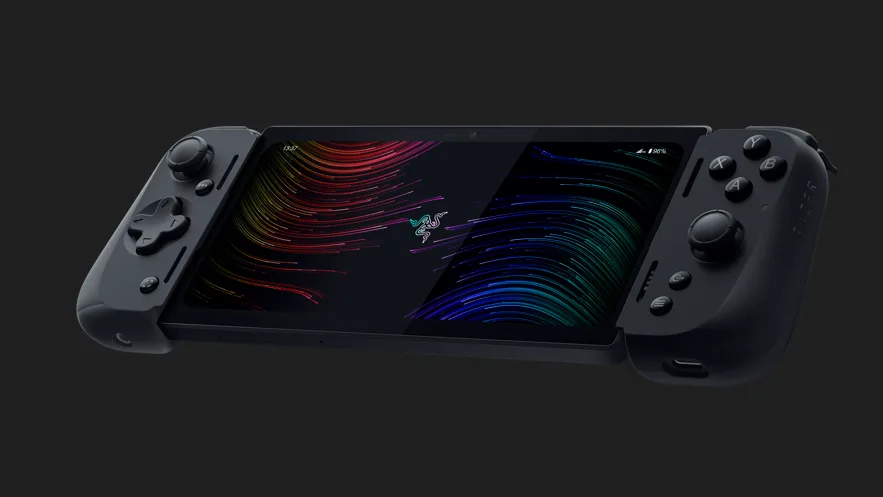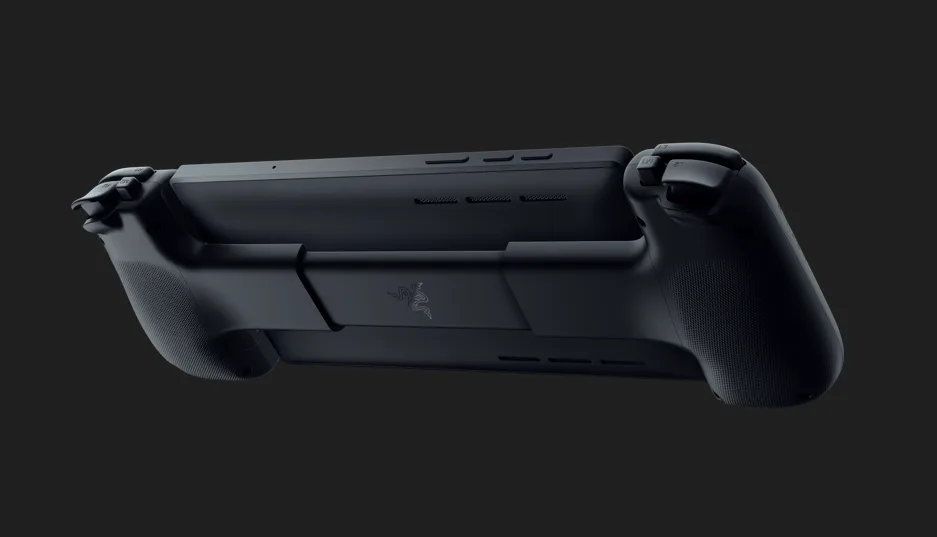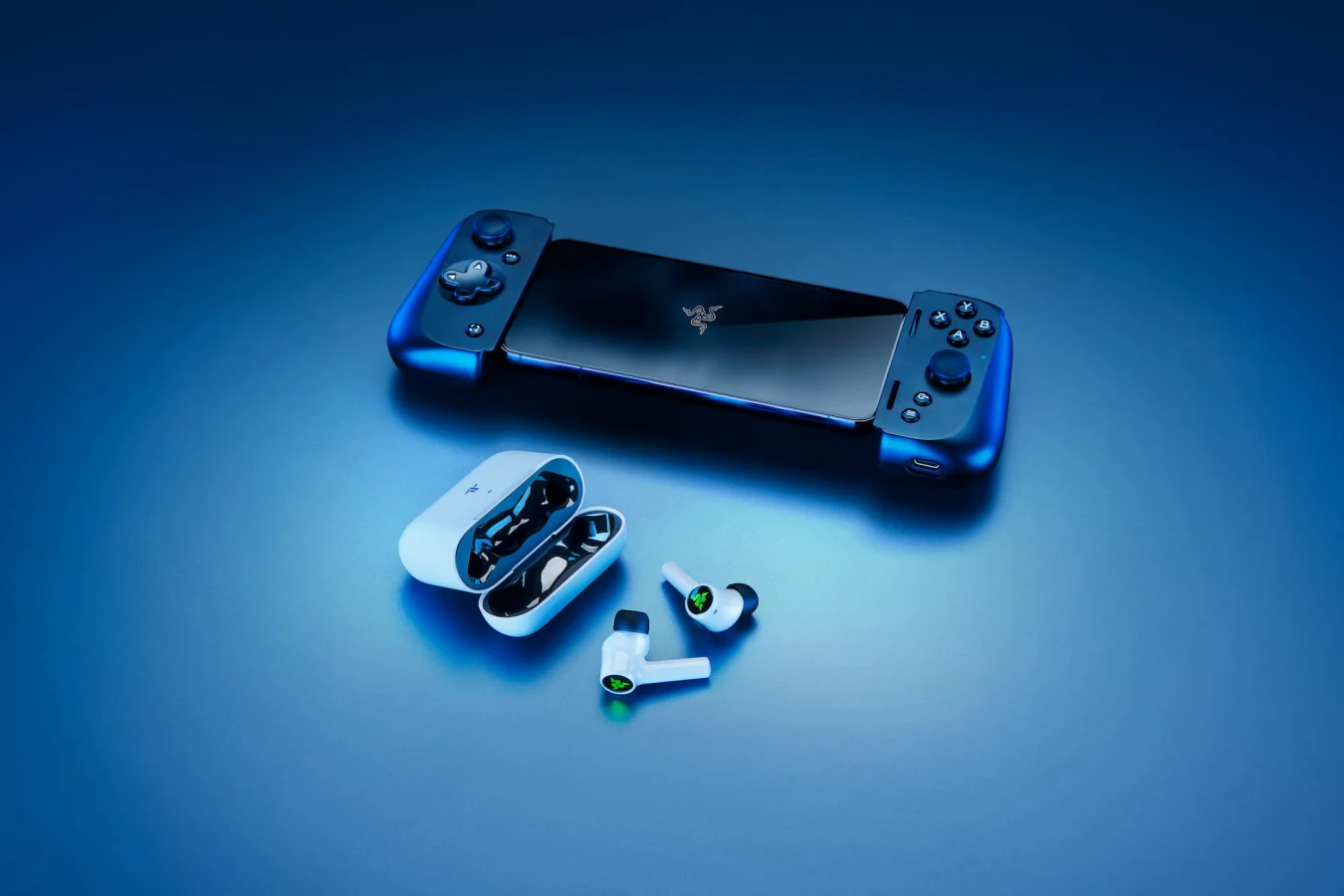Razer’s cloud gaming handheld starts at $400 for the WiFi-only model
Razer, you may recall, recently teased a 5G handheld device that’s focused on cloud gaming. The company took the opportunity at RazerCon to formally announce the system, which it calls the Razer Edge — yep, Razer finally went there with its branding.
The Edge has a 6.8-inch AMOLED screen with a refresh rate of 144Hz and a Full HD+ resolution of 2,400 x 1,080. Razer claims the display has 87 percent more pixels than competitors’ devices. The Steam Deck’s screen, for instance, has a 1,280 x 800 resolution. The Edge’s Gorilla Glass touchscreen also has a 288Hz sampling rate, which should make it pretty darn responsive.
Razer worked with Qualcomm and Verizon on this device. It runs on the Snapdragon G3x Gen 1 Gaming Platform, which was developed exclusively for the Edge. The device has a 3Ghz octa-core Kryo CPU and an Adreno GPU, along with active cooling and six air vents. Razer says early benchmarking shows that the Snapdragon G3x Gen 1 delivers two to three times the speeds of typical mobile platforms, such as the Snapdragon 720G.
Razer
The device has a 5,000mAh capacity battery, as well as 8GB of LPDDR5 RAM and 128GB of storage. On the audio front, there are two-way speakers with Verizon Adaptive Sound and a pair of digital microphones. There’s a webcam too — you’ll have the option to livestream your gameplay.
The Edge is comprised of an Android 12 tablet housed inside the new Razer Kishi V2 Pro controller. The latter has the same analog triggers as the Kishi V2, along with microswitches, programmable buttons and what Razer claims is an “ultra-precise” D-pad. What makes the Kishi V2 Pro different is that it has HyperSense haptic feedback and, blissfully, a 3.5mm headphone jack. Together, the tablet and controller weigh 400.8 grams, which is a bit less than a pound.
As for the games, the Edge, which will only be available in the US at the outset, will come with launchers for Epic Games, Xbox Cloud Gaming and Nvidia GeForce Now preinstalled. You’ll also be able to access remote play services such as Steam Link, Moonlight and Parsec.

Razer
Since this is a cloud gaming-focused device, connectivity is key. Razer says the Edge has WiFi 6E that performs on an “uncongested” 6GHz channel and has multi-gig bandwidth support for fast download and upload speeds. When you’re on the go, you’ll be able to connect to cloud gaming services through 5G as long as you have the right model.
The 5G version of the Razer Edge is a Verizon exclusive. Pricing and exact availability will be confirmed later, but it should be out in January, around the same time as the WiFi model. That version will run you $400 and it’ll be available from Razer’s website and RazerStore locations. You can reserve one for a refundable deposit of $5. Razer hasn’t revealed pricing or availability for the standalone Kishi V2 Pro controller.
That’s not an insignificant price for the WiFi model, and it’s likely that the 5G version will cost more, but the specs seem solid for the money. It seems like an option worth considering for on-the-go cloud gaming if you’d rather not slot your phone into a controller and you don’t want to lug a Steam Deck around.
The Razer Edge isn’t the only handheld device focused on cloud gaming. Logitech’s $350 G Cloud Gaming Handheld, which doesn’t have WiFi 6 or 6E support, will be available next week. Other notable manufacturers are turning their attention to cloud gaming as well. Google this week announced three Chromebooks from Acer, ASUS and Lenovo that are designed for streaming games.

Razer
The Edge was far from Razer’s only product announcement at RazerCon. Along with the Kraken Kitty V2 Pro wired headset (featuring swappable bunny, bear and cat ears with Chroma RGB lighting) and some other gear, the company showed off its Hammerhead HyperSpeed earbuds.
The earbuds feature Chroma RGB, active noise cancellation, Bluetooth 5.2 and 2.4GHz connectivity (via a USB-C dongle you can plug into your console or other device) to minimize latency. Razer claims you’ll get up to 30 hours of total battery life, factoring in top ups from the charging case. Hammerhead HyperSpeed is available in PlayStation- and Xbox-braded variants. The earbuds cost $150 and they will be available in November.

Razer
All products recommended by Engadget are selected by our editorial team, independent of our parent company. Some of our stories include affiliate links. If you buy something through one of these links, we may earn an affiliate commission. All prices are correct at the time of publishing.
For all the latest Technology News Click Here
For the latest news and updates, follow us on Google News.
